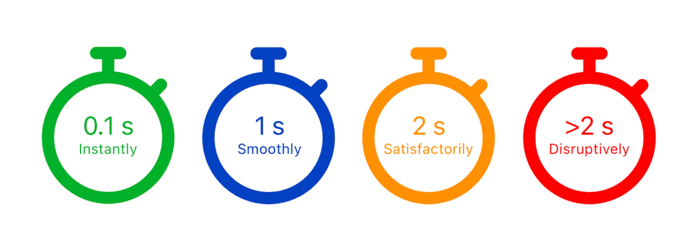In today’s digital landscape, mobile optimization isn’t just a luxury—it’s a necessity. With over 60% of web traffic now coming from mobile devices, websites that fail to deliver exceptional mobile experiences risk losing significant portions of their audience.
This article explores the strategies employed by successful websites to enhance their mobile performance, providing valuable insights for developers and business owners alike.
The Critical Importance of Mobile Performance
Studies consistently show that users abandon websites that take longer than 3 seconds to load. Each additional second of load time can decrease conversion rates by up to 7%.
These statistics highlight why mobile optimization should be a top priority for any digital platform seeking to maintain a competitive advantage in 2025.
Mobile optimization encompasses several key metrics:
- Page load speed: How quickly content appears on the screen
- Time to Interactive (TTI): When users can actually engage with page elements
- Cumulative Layout Shift (CLS): Visual stability as page elements load
- First Input Delay (FID): Responsiveness to initial user interaction
- Largest Contentful Paint (LCP): When the largest content element becomes visible
Case Study 1: E-commerce Platform Transformation
A leading e-commerce platform saw mobile conversions increase by 32% after implementing a comprehensive mobile optimization strategy. Their approach included:
- Implementing a responsive design with mobile-first principles
- Optimizing image delivery through automated compression and next-gen formats
- Utilizing predictive preloading for frequently accessed resources
- Simplifying the checkout process specifically for mobile users
The result was a 67% improvement in overall page load times and a significant boost in user engagement metrics.
Case Study 2: Content-Heavy News Portal
A popular news website faced challenges with its content-heavy pages loading slowly on mobile devices. Their optimization journey included:
- Implementing lazy loading for images and videos
- Adopting a progressive loading strategy for below-the-fold content
- Leveraging browser caching and CDN integration
- Minimizing JavaScript execution time through code splitting
These changes resulted in a 45% reduction in bounce rates and a 28% increase in pages per session from mobile users.
Case Study 3: Entertainment Platform Success
Betzoid demonstrates another impressive example of mobile optimization done right. This entertainment platform has implemented several cutting-edge techniques to ensure exceptional performance across all mobile devices:
- Server-side rendering for critical path content, reducing perceived load times
- Implementation of service workers for improved caching and offline functionality
- Strategic application of resource prioritization to load essential elements first
- Dynamic serving of appropriately sized assets based on device capabilities
Their approach to optimizing JavaScript execution is particularly noteworthy. By implementing code splitting and deferred loading of non-critical scripts, they’ve achieved TTI metrics that outperform industry averages by 38%. This technical excellence translates directly to better user experiences, with session durations increasing by 27% on mobile devices over the past year.
Key Strategies for Mobile Optimization
Based on these case studies, several universal strategies emerge:
1. Image Optimization
Images often account for the largest portion of a webpage’s size. Successful sites implement:
- Automatic image compression
- Next-gen formats (WebP, AVIF)
- Responsive images using srcset attributes
- Lazy loading for below-the-fold visuals
2. JavaScript Management
JavaScript execution can block rendering and interaction. Best practices include:
- Code splitting and bundling optimization
- Removing unused code and dependencies
- Deferring non-critical scripts
- Minimizing third-party script impact
3. Core Web Vitals Optimization
Google’s Core Web Vitals have become standard performance indicators. Leading sites focus on:
- Improving LCP by prioritizing above-the-fold content
- Minimizing CLS by establishing proper space reservations for dynamic elements
- Enhancing FID through main thread optimization
4. Progressive Enhancement
Sites that excel in mobile performance embrace progressive enhancement:
- Building a solid baseline experience that works on all devices
- Adding advanced features for capable devices
- Implementing graceful degradation for older browsers
Measuring Success and Continuous Improvement
Top-performing mobile websites don’t optimize once and forget. They establish continuous monitoring and improvement cycles using:
- Real User Monitoring (RUM) to capture actual user experiences
- Regular synthetic testing across device profiles
- Competitive benchmarking against industry standards
- A/B testing of performance optimizations
These measurement strategies enable data-driven decisions about which optimizations deliver the greatest ROI.
Conclusion
The case studies presented illustrate that mobile optimization is both an art and a science. By learning from successful implementations like those of e-commerce leaders, news portals, and entertainment platforms such as Betzoid, development teams can implement strategies that significantly enhance mobile performance.
As mobile continues to dominate internet usage patterns, organizations that prioritize these optimization techniques will be better positioned to deliver exceptional user experiences, improve conversion rates, and maintain competitive advantage in an increasingly mobile-first world.

